Scotland’s first formal gardens, reinvigorated with geometric precision
The beautiful gardens at Kinross have come a long way since the days of Mary, Queen of Scots. Photographs by Val Corbett.

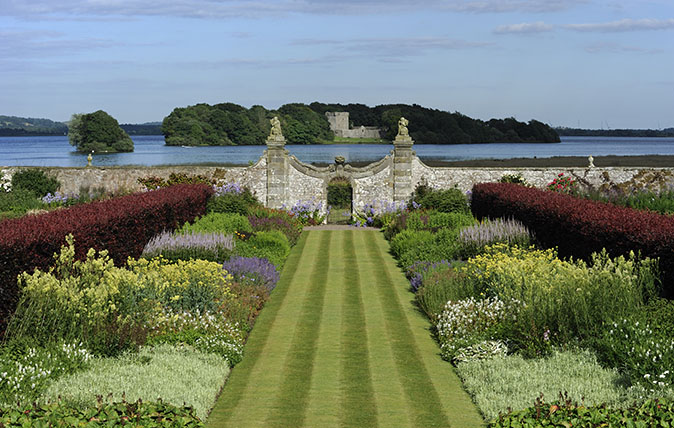
Nothing quite prepares you for your arrival at Kinross House. I’m gently making my way along a side street in the village of Kinross when, quite suddenly, I find myself before a pair of imposing iron gates. Beyond is a dazzling surprise: a long, tree-lined avenue that guides my eye to the centre of a splendidly proportioned house, the first proper neo-Classical country house in Scotland – architect Sir William Bruce was the father of Classicism in Scotland.
As I get closer, the enormous, immaculately mowed West Lawn is revealed. When Donald Fothergill bought Kinross House in 2011, he was determined that the tradition of playing cricket on the lawn should continue.
With one of the charming ogee-roofed pavilions concealing an outdoor loo and the backdrop of the house making it ‘surely one of the finest imaginable pitches in the country’, the annual match hosted by the Kinross House Invitation XI must be a spectacular sight.
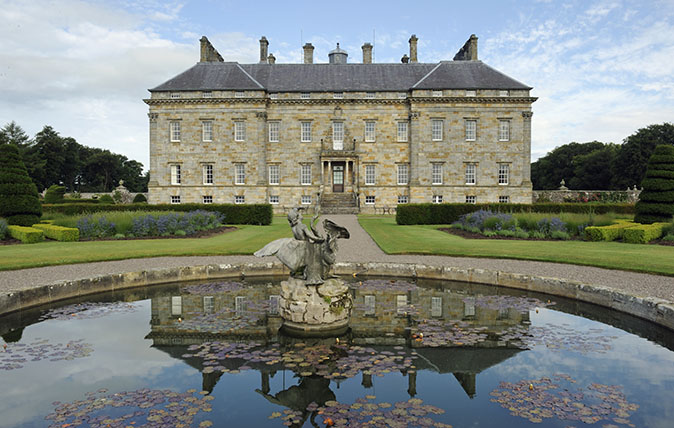
These days, the lawn is also used for arrivals by helicopter. Head gardener Kenny Stewart, who meets me on the front steps, recalls mowing a tartan lawn for a guest passionate about his Scottish lineage.
Looking back at the drive, he remembers guiding a team of tree surgeons to prune back the mature woodland ‘just enough’ to create a band of light on either side of the house. It was a subtle, but effective move and typical of the attention to detail that drives the restoration of this garden. The revitalised house (Which featured in Country Life Magazine, August 12, 2009 and March 11, 2016) won the Historic Houses Association Restoration Award in 2013.
However, the real wonder of the garden is yet to come. From the top of the steps, one can see through the ground-floor rooms of the house to the formal gardens on the other side, where a path is exactly aligned with the centre of Loch Leven Castle on the island in the lake.
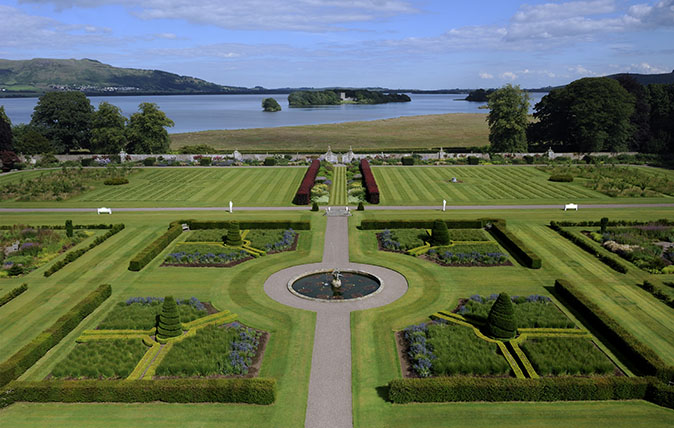
‘The midpoint of the entrance gates is a millimetre-perfect straight line to the middle of the castle keep. It’s brilliantly done,’ Mr Fothergill tells me, the excitement in his voice surely as fresh as on the day he first saw the place. The island castle, of course, has its own rich history – Mary, Queen of Scots was imprisoned there in 1567.
Exquisite houses, the beauty of Nature, and how to get the most from your life, straight to your inbox.
By the late 18th century, Kinross House was owned by the Montgomery family and both house and garden were restored in the Edwardian style by Sir Basil Montgomery in 1902. It was still in the ownership of the Montgomerys when it was aquired by Mr Fothergill.
Mr Stewart had been working for the family for more than a decade and fondly remembers providing colour for summer holidays. ‘We used to plant out 7,000 bedding plants and 7,000 half-hardies.’
However, times were changing and, when Mr Fothergill acquired the estate, he instinctively felt not only that some of the garden was past its best, but that the pleasant, if slightly rambling style, ‘didn’t sit comfortably with a 17th-century house’.
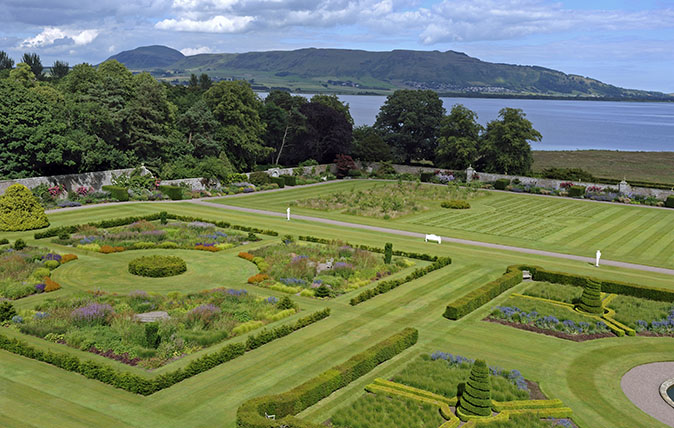
Mr Fothergill sought out the original Bruce plans and commissioned landscape architect Alistair Baldwin to create a masterplan that reinstated much of the garden’s original layout, yet respected the best of its Edwardian elements and, at the same time, introduced contemporary planting.
Mr Fothergill was clear that Piet Oudolf’s planting schemes in the walled garden at Scampston Hall, North Yorkshire, with their use of carefully selected long-lasting perennials combined with grasses to add movement, would be a key inspiration.
In the top half of the garden, the roses around the East Pond were replaced by a central parterre and ‘the two parterres that had gone missing’ were reinstated, one on either side.
the lower part of the garden, Bruce’s plan for a pair of grid-like orchards underplanted with Scottish wildflowers (this now seems the most modern of ideas) was implemented, as was the rather brilliant 18th-century practice of creating grass ‘plats’ by mowing lawns at different levels to create crisp patterns.
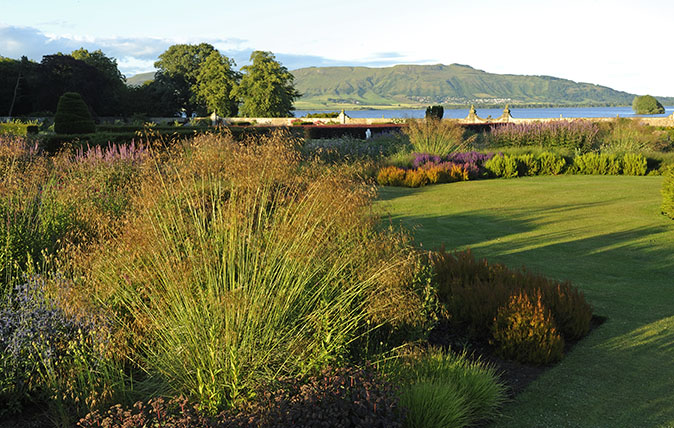
For the three parterres, new yew hedges have been planted and some of the original outsize ‘10ft-wide’ hedges have been painstakingly renovated so that they look fresh and in proportion. These, together with double rows of low box hedging and old and new yew topiary, provide an outstanding framework for the seductive planting within.
In the central parterre, the palette is stylishly restricted to electric-blue sea holly Eryngium x tripartitum, the purple moor grass Molinia caerulea subsp. caerulea Heidebraut, the neat-headed Allium sphaerocephalon and the rusty foxglove Digitalis ferruginea. The moor grass will become a glistening wavy sea as the summer progresses.
In the north and south parterres, the palette is more celebratory. Exuberant fountains of Stipa gigantea are an energetic starting point and curving paths and comfortable benches are deliberately embedded among swathes of towering Veronicastrum virginicum Lavendelturm and raspberry-ice-cream coloured Astrantia Roma, in order that visitors can ‘be in their own world, surrounded by colour’.
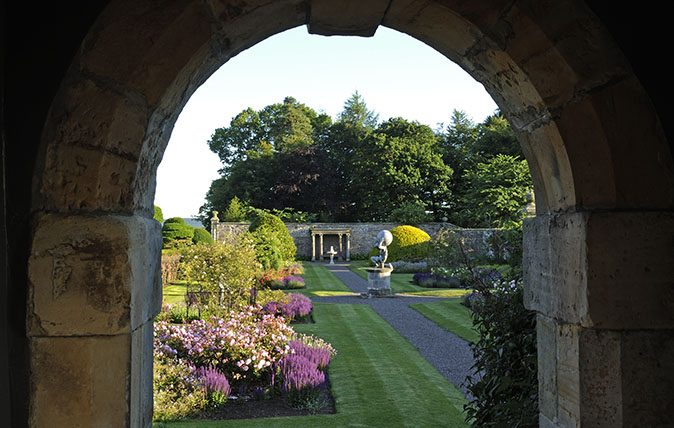
The parterre beds are edged with flaming Scottish heathers, which look wonderful, but are, in fact, very un-Oudolf selections, as they only last five years. ‘We’re about to be propagating like crazy,’ says Mr Stewart, as unruffled as ever by the scale of replacement ahead.
Mr Stewart and Mr Fothergill have developed the kind of working relationship that seems set to see this new era in the garden at Kinross go from strength to strength. The pair go on regular hour-long walks around the garden, notebooks in hand: ‘I’m interested in everything, down to the last detail,’ declares Mr Fothergill, with his signature unstoppable energy. ‘Kenny is very enthusiastic and I’m very enthusiastic, so it’s a very good combination.’
Mr Stewart’s role includes caring for the double border that’s a legacy from the Montgomery days, its copper-beech hedge adding a rich smouldering dash of colour through the centre of the walled garden and providing a gorgeous, glowing backdrop to its carefully colour-graded plants.
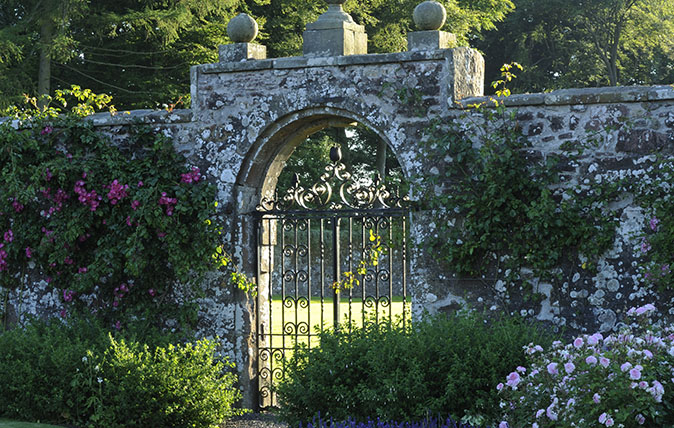
He has supervised the redevelopment of the perimeter borders, splitting the original plants, replanting in smaller blocks and adding grasses to create a softer look. He has also regenerated dozens of roses, many of them bred by a former gardener, Dave Fernie, who left them unnamed, but unique to Kinross.
The second of the original rose gardens has been replanted with a collection of Old English roses underplanted with long-flowering perennials and there’s a brand-new walled kitchen garden that’s been built using stone reclaimed from the house renovation. Beyond the kitchen garden is an even newer orchard, with a brave stand of apples that are fully intended to provide a supply of Kinross House cider.
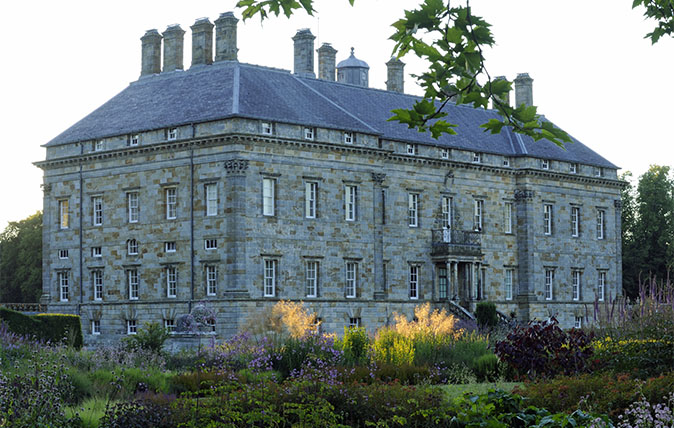
I leave Kinross House with the sense that nothing – neither the sandiest of soils nor the most scorching east winds – will stop the imaginative and careful nurturing of this exhilarating garden, which celebrates the past as much as it embraces the present.
Find out more about Kinross House and the gardens at www.kinrosshouse.com. The house may be hired for exclusive use and guided tours for horticultural groups can be arranged by appointment with head gardener Kenny Stewart.
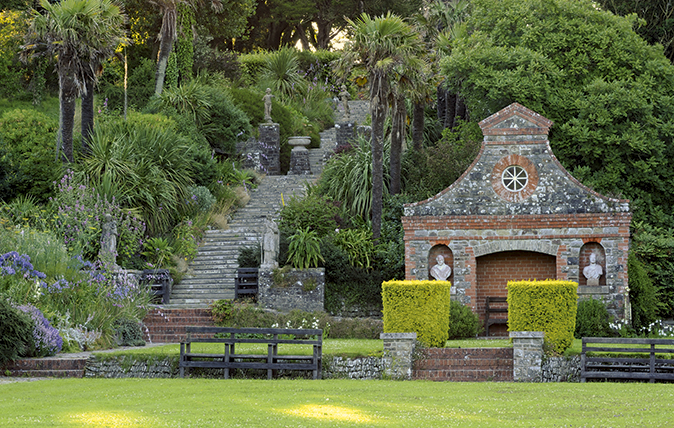
Tapeley Park: A Devonshire garden filled with dramatic flourishes at every turn
Non Morris discovers that experimentation, environmentalism and numerous dramatic flourishes invigorate this unusual Devonshire garden at every turn.
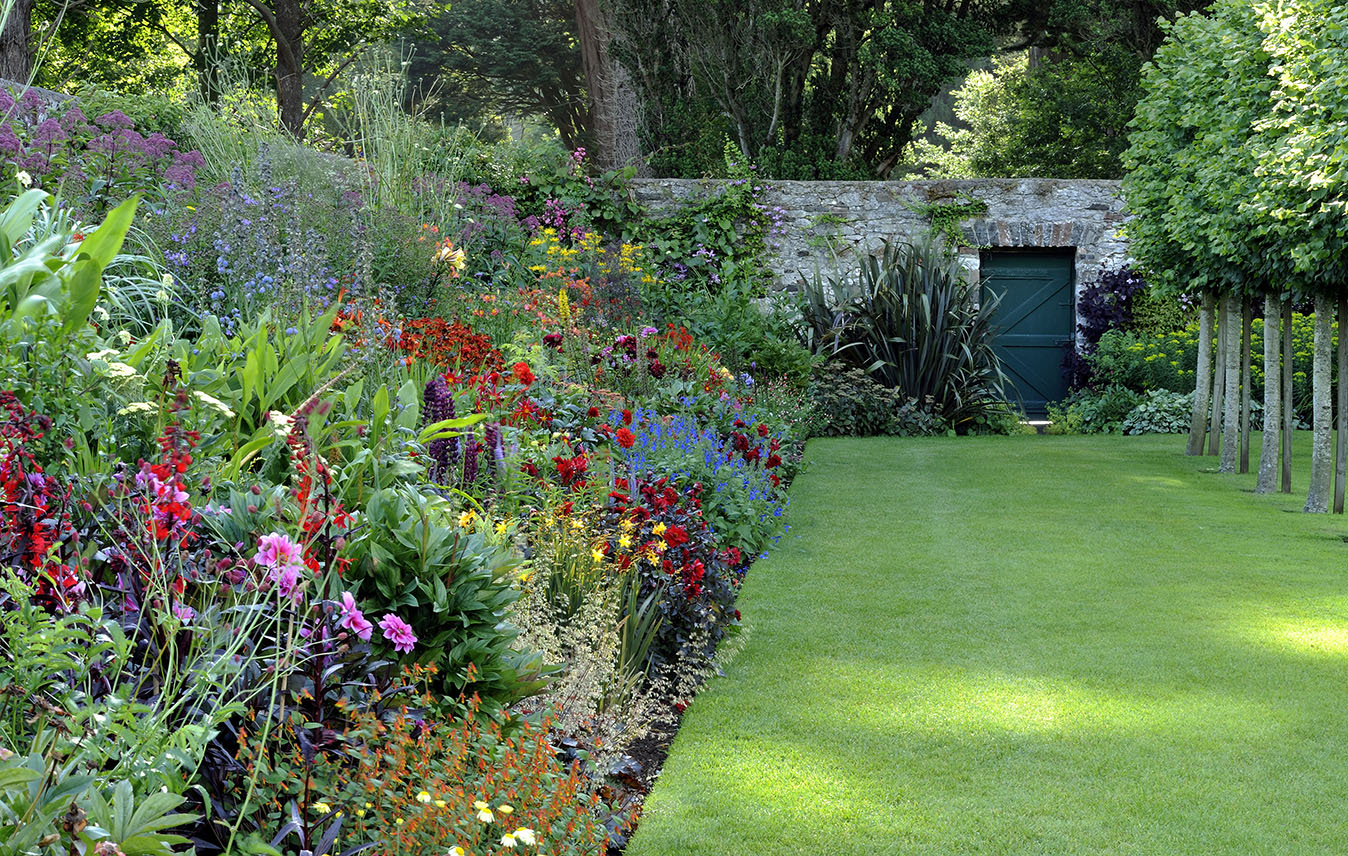
The walled garden at Glenarm Castle, full of surprising, exhilarating and fiery colours
Glenarm Castle's walled garden is a testament to the endless nurturing enthusiasm and creativity of those who care for it,
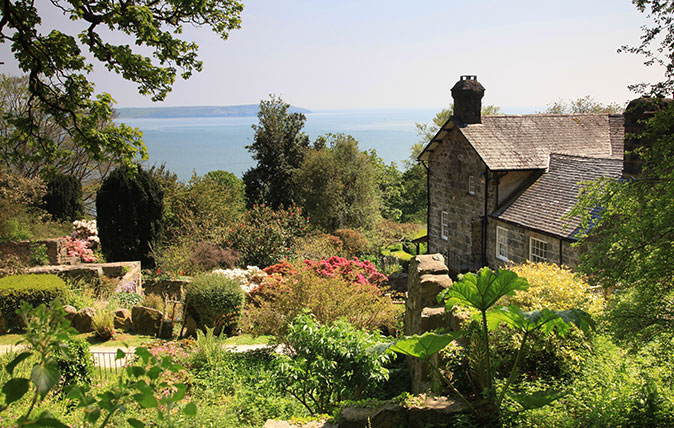
Credit: Plas yn Rhiw - National Trust
Plas yn Rhiw: An intoxicating Welsh garden that time forgot
Non Morris visited one of the most beautiful gardens in Wales, and came away utterly smitten.
